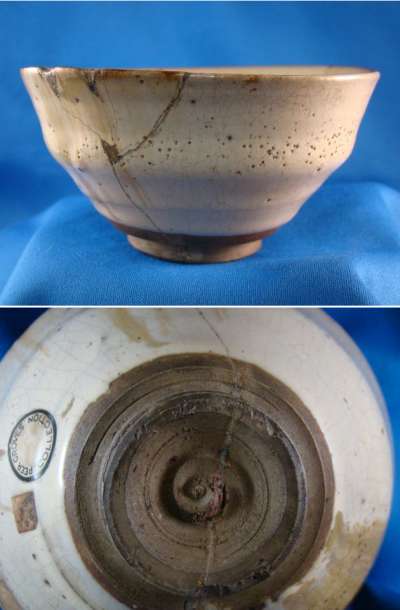
Japanese Summer Chawan'. Probably Fukugawa-Hagi, Late 18th-Early 19th C.
Picture courtesy of: James Randolph Hillard, Gotheborg Discussion Board, 2012
The term embodies a refined aesthetic sensibility that was very evident in ancient Chinese art and literature long before the concept was popularized in Japan through the introduction of Zen Buddhism and the Tea Ceremony.
Wabi sabi is the most conspicuous and characteristic feature of traditional Japanese beauty and it occupies roughly the same position in the Japanese pantheon of aesthetic values as do the Greek ideals of beauty and perfection in the West. If an object or expression can bring about, within us, a sense of serene melancholy and a spiritual longing, then that object could be said to be wabi-sabi.
Wabi sabi nurtures all that is authentic by acknowledging three simple realities: nothing lasts, nothing is finished, and nothing is perfect.
The term wabi sabi is derived from two characters shared by Japanese and Chinese. Originally, wabi means 'despondence', and sabi means 'loneliness' or 'solitude'. These are words for feelings, not for physical appearance of objects. Wabi sabi is not a style defined by superficial appearance. It is an aesthetic ideal, a quiet and sensitive state of mind, attainable by learning to see the invisible, paring away what is unnecessary, similar to western minimalism.
A